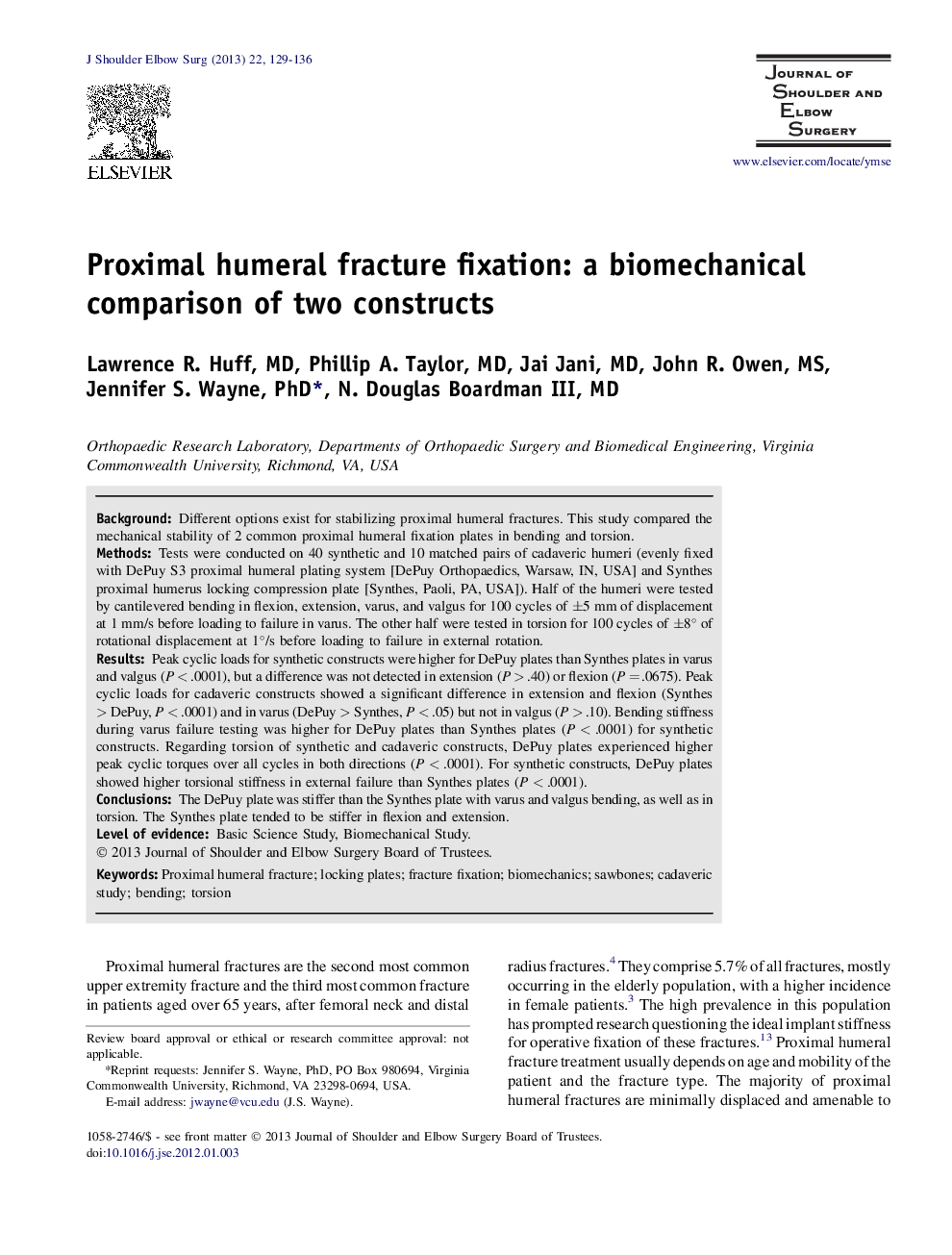| Article ID | Journal | Published Year | Pages | File Type |
|---|---|---|---|---|
| 4075407 | Journal of Shoulder and Elbow Surgery | 2013 | 8 Pages |
BackgroundDifferent options exist for stabilizing proximal humeral fractures. This study compared the mechanical stability of 2 common proximal humeral fixation plates in bending and torsion.MethodsTests were conducted on 40 synthetic and 10 matched pairs of cadaveric humeri (evenly fixed with DePuy S3 proximal humeral plating system [DePuy Orthopaedics, Warsaw, IN, USA] and Synthes proximal humerus locking compression plate [Synthes, Paoli, PA, USA]). Half of the humeri were tested by cantilevered bending in flexion, extension, varus, and valgus for 100 cycles of ±5 mm of displacement at 1 mm/s before loading to failure in varus. The other half were tested in torsion for 100 cycles of ±8° of rotational displacement at 1°/s before loading to failure in external rotation.ResultsPeak cyclic loads for synthetic constructs were higher for DePuy plates than Synthes plates in varus and valgus (P < .0001), but a difference was not detected in extension (P > .40) or flexion (P = .0675). Peak cyclic loads for cadaveric constructs showed a significant difference in extension and flexion (Synthes > DePuy, P < .0001) and in varus (DePuy > Synthes, P < .05) but not in valgus (P > .10). Bending stiffness during varus failure testing was higher for DePuy plates than Synthes plates (P < .0001) for synthetic constructs. Regarding torsion of synthetic and cadaveric constructs, DePuy plates experienced higher peak cyclic torques over all cycles in both directions (P < .0001). For synthetic constructs, DePuy plates showed higher torsional stiffness in external failure than Synthes plates (P < .0001).ConclusionsThe DePuy plate was stiffer than the Synthes plate with varus and valgus bending, as well as in torsion. The Synthes plate tended to be stiffer in flexion and extension.
